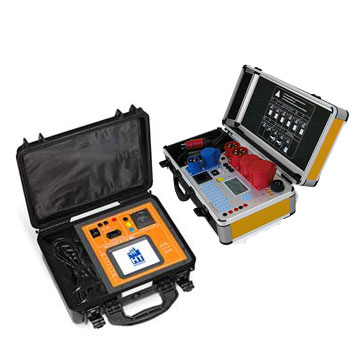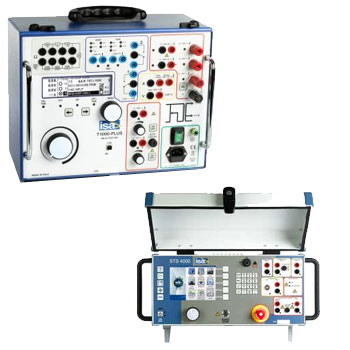
Mount the converter correctly
Damage to pressure transducers is usually caused by improper installation. The decisive factor here is the hole that was drilled either too small or otherwise unsuitably. This can damage the bulk pressure transducer diaphragm, rendering the instrument inoperable
To make sure the hole is the right size, there are special tool kits. An assembly torque of 100 to 200 in.lbs for ½-20 UNF is essential to ensure an adequate seal. However, excessive assembly torque can cause seizure, even with high-temperature lubricant.
How to know if the thread size of the mounting hole is correct?
In general, threads are ½-20 UNF 2B. A mounting hole gauge plug can be used to confirm this.
Mounting holes must be clean
It is important that the transducer mounting holes are clean and free of plastic debris. Before cleaning an extruder, all transducers should be removed from the barrel to avoid damage. When they are removed, plastic can flow into the mounting holes and harden. Failure to remove this hard plastic residue will result in significant tip damage when the transducers are reinserted. A cleaning tool kit can be used to remove the plastic. It should be noted that repeated cleaning will create holes that are “too deep” and may damage the transducer tip. If this is seen, standoffs should be used to raise the transducer.
How to choose a good location?
The converters can be located in the barrel, in front of a screen changer, before and after a melt pump or in the mold. If a transducer is positioned too far upstream in the cylinder, unmelted plastic granules can rub against the transducer tip, which can cause damage. If a transducer is too far back in the mounting hole, a stagnant pool of molten plastic forms between the transducer tip and the screw flights. Over time, this plastic will degrade to carbon, preventing the transmission of an accurate pressure signal. On the other hand, if the transducer protrudes too far into the barrel, the worm threads can shear off the device's sensor tip.
Carefully clean the melt pressure sensor
All transducers should be removed before cleaning an extruder barrel with a wire brush or special cleaners. Both can damage the transducer diaphragm. The transducer should be removed while the barrel is hot and the tip wiped clean with a non-abrasive cloth. The converter hole should be cleaned out with a cleaning drill/guide sleeve at this point.
Avoid cold starts
Both the converter and the extruder can be damaged if the extruder is not brought up to operating temperature before the machine is started. Sufficient “soak time” must be provided for the plastic to transition from the solid to the molten state. In addition, it should be noted that removing a transducer from a cold extruder can cause material to adhere to the transducer tip, causing the diaphragm to tear away from the assembly. Make sure the barrel is warm enough for any plastic that may be present to soften before removing the transducer.
Avoid too much pressure on the converter
Even though the transducers are designed to withstand 1.5 times gauge pressure, avoid the risk of overpressurizing by ensuring you use the correct model, rated for your range of extrusion operating pressures is. A good rule of thumb is to use transmitters that are built to withstand twice the pressure rating in your process. Then the extruder has to be operated at an extremely high (and unsafe) pressure level for the converter to fail.
Diaphragm damage
Membrane damaged by a sharp edge
Causes:
- Has been damaged by sharp edge contact, possibly with a knife or screwdriver
- Was dropped
- Had contact with degraded polymer in hole
Solutions:
- Use protective cap during transport and storage
- Check the hole for burrs or hardened plastic with a micrometer
- Clean hole with cleaning tool

Membrane is abraded
Causes:
- Had contact with abrasive material in process
- Clean with wire brush or wheel
Solutions:
- Dymax coating for abrasive applications
- Wipe the hot tip with a cloth to remove the plastic
- Never use a wire brush or cleaning wheel

Membrane is torn
Causes:
- Adhesive material shrank as a result of cold or cured removal
- Sensor is above Flite (Fatigue)
Solutions:
- Remove hot to avoid sticking
- Double strength (T80) cone or TiN-coated cone
- Move sensor

Membrane missing
Causes:
- Removal in the cold state of the material
- Shrinkage of adhesive material
- Membrane attached to the material
Solutions:
- Remove hot to avoid sticking
- Double strength (T80) cone or TiN-coated cone

Membrane is wavy; the edge is squeezed at the sensor tip
Causes:
- High shear stress
- Squeezing at the side during installation (transverse thread)
- Non-concentric mounting hole
Solutions:
- Check installation location
- Double strength membrane (option T80)
- Check the hole for burrs or hardened plastic with a micrometer
- Clean hole with cleaning tool

Gasket surface is damaged
Causes:
- Bad mounting hole or cross thread
Solutions:
- Check the hole for burrs or hardened plastic with a micrometer
- Checking the threads with a gauge plug
- Clean hole with cleaning tool

Shaft is bent
Causes:
- An external mechanical impact on the stock
Solutions:
- Handle is too long - needs to be trimmed to match depth
- Over the top

Shaft torn off
Causes:
- Mechanical action
- Thread is fused (welded) in the hole
Solutions:
- Apply anti-seize to threads before installation
- Follow torque requirements
- Use Hastelloy thread to minimize abrasion

Flexible connection (capillary) broken
Causes:
- Bend radius too tight
- Installation damage
- Capillary cut or stretched to capacity
Solutions:
- Handle exposed capillary with care
- Extend flex or use 435XL version

Thread damaged
Causes:
- Bad mounting hole
- Force insertion or removal
Solutions:
- Check the hole for burrs or hardened plastic with a micrometer
- Clean hole with cleaning tool












































































































































































